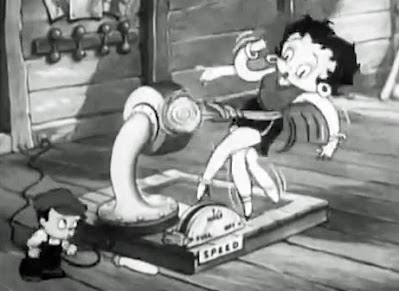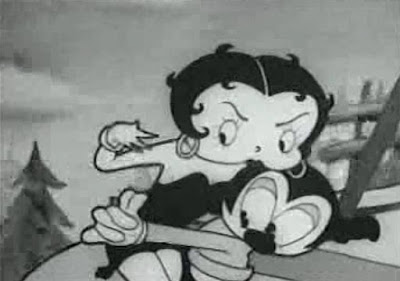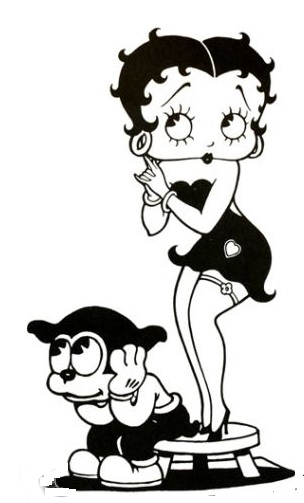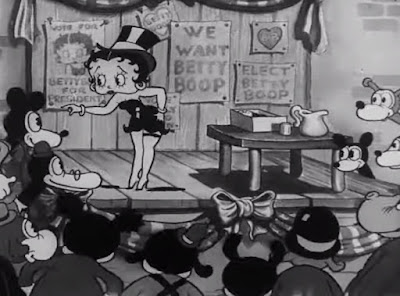Grampy: The Candid Candidate (1937)
Starring: Jack Mercer (voice of Grampy) and Mae Questel (voice of Betty Boop)
Director: Dave Fleischer
Rating: Nine of Ten Stars
After narrowly winning at election for Mayor, various citizens groups invade Grampy's office and insist he deliver on his promises. Grampy comes up with innovative ways to meet their demands (and more)!
Although this is ostensibly a Betty Boop cartoon, the fact that it's headlined by a member of what is generally viewed as her supporting cast, says a lot about the standing of the Betty Boop character in the late 1930s. Her adventures lost much of their edge when production companies became obligated to adhere to the MPPC, and Betty grew up, put away the tiny flapper dress, and became a domesticated homemaker. Meanwhile, characters like Grampy, who was introduced into the series in 1935, took more and more of the spotlight. In some ways, Betty Boop was following the same path that her one-time boyfriend Bimbo had followed: Betty began her existence as a supporting character to Bimbo, but she quickly came to overshadow him.
While the "The Candid Candidate" is a solid sign that Betty's days as the reigning Queen of Cartoon Comedy were coming to an end, it is an item that has stood the test time--with humor that is as fresh now as it was in 1937, and probably still will be in 2103. Not only does it feature a rapid-fire stream of sight gags, but it's a fun-filled send-up of politicians who over-promise and who then, when called to deliver, fail at truly fixing problems they campaigned on while going so overboard in other areas to the point where there are going to be unintended consequences down the road. Shots taken at the media here also shows that "fake news" isn't new, and that politicians pandered just as hard back then as they do today. There is so much in this cartoon that remains relevant that it's funny and depressing at the same time.
Whether you watch "The Candid Candidate" for its social commentary or just for the crazy and innovative ways Grampy goes about being the Greatest Mayor Ever, you're going to enjoy every moment of its six-minute running time. I've embedded it below so you can check it out now--I'm sure it will brighten your day.
(In fact, I enjoyed this cartoon so much that I think I shall have to focus my meanderings through the history of Betty Boop on just the ones featuring Grampy. He made ten appearances between 1935 and 1937, and if they're all as good as this, I'll be glad I did!)






























%20(Yasujir%C3%B4%20Ozu,%201957).jpg)






.jpg)
